- You are here:
- Home
A highlight of Georgia Tech’s celebration of the International Year of the Periodic Table of the Chemical Elements (#IYPT2019GT) is a Frontiers in Science lecture series. Prominent researchers from Georgia Tech and beyond will expound on little-discussed aspects of chemical elements–from how they have incited passion, adventure, betrayal and obsession; to how they were created in the universe; to the roles they have played in global geopolitics.
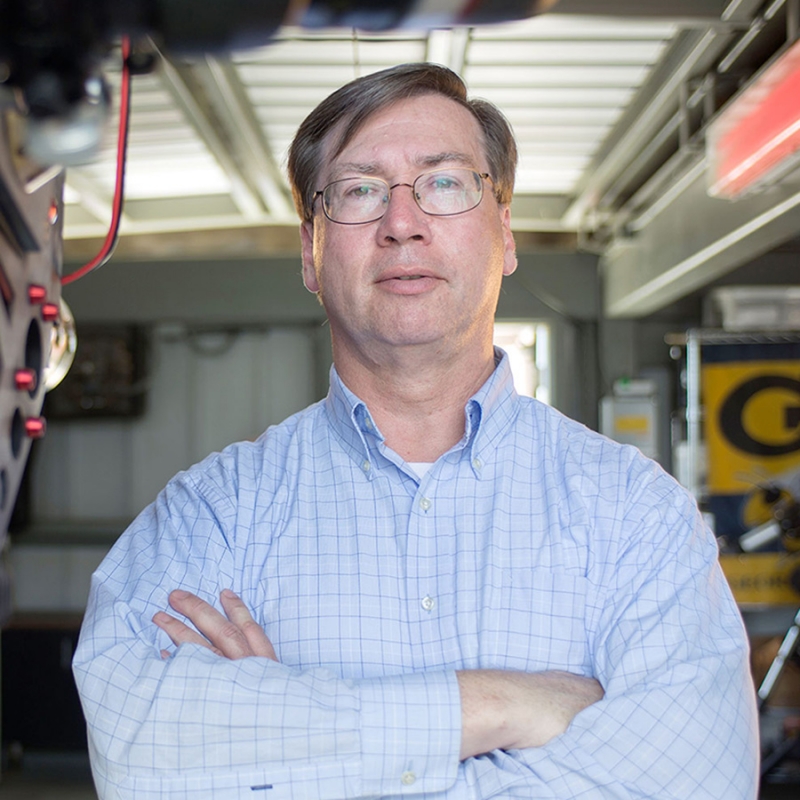 Feb. 5, 2019
Feb. 5, 2019
How the Universe Made the Elements in the Periodic Table
James Sowell, Georgia Tech School of Physics
6:30 PM; Lecture Room L2, Howey Physics Building, 800 Atlantic Drive NW, Atlanta, GA 30318
Closest public parking is Visitors Area 4, Ferst Street and Atlantic Drive, https://pts.gatech.edu/visitors#l3
Abstract
The creation of the elements in the universe took billions of years and required various processes. The first few minutes of the big bang produced only hydrogen (H) and helium (He). No new elements were formed until a few hundred million years later when the first generation of stars were born and they started fusing H and He into slightly higher-mass elements, such as carbon and oxygen. Various fusion reactions by multiple generations of stars eventually created elements up to iron (Fe). However, normal stars cannot produce elements beyond Fe. Creation of elements heavier than Fe required the cataclysmic explosions of supernovas. These violent deaths of massive stars not only completed the natural elements in the periodic table. They also enabled human life, because certain life processes require heavy elements.
About the Speaker
James “Jim” Sowell is an astronomer at Georgia Tech and the director of the Georgia Tech Observatory. He has taught Georgia Tech’s two Introductory Astronomy courses for 27 years and the advanced Stellar Astrophysics course for 20 years.
He won the inaugural CETL Undergraduate Educator Award in 2009. He often performs public outreach and education, including the widely popular, monthly Public Nights at the Observatory; presentations at schools; and workshops for K-12 teachers. He developed the Aloha Telescope. This remotely controlled facility in Hawaii allows Atlanta area K-12 teachers and students to view live images of the Moon during regular school hours.
Sowell earned B.S. and M.S. degrees from Vanderbilt University and a Ph.D. from the University of Michigan. He joined Georgia Tech in 1989.
The full lecture is available for viewing.
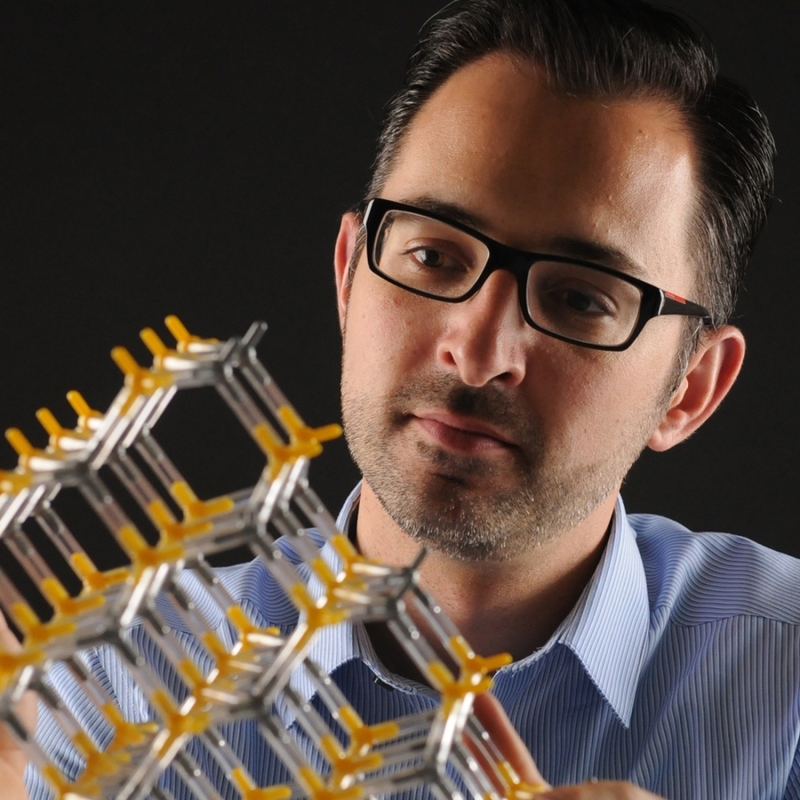 March 5, 2019
March 5, 2019
Celebrating Silicon’s Success, its Hidden History, and its Next Act
Michael A. Filler, Georgia Tech School of Chemical and Biomolecular Engineering
6:30 PM; Rooms 1116-1118, Marcus Nanotechnology Building, 345 Ferst Dr NW, Atlanta, GA 30318
Closest public parking is Visitors Area 4, Ferst Street and Atlantic Drive, https://pts.gatech.edu/visitors#l3
Abstract
The history of silicon is usually told as a history of electronic materials and devices. However, it is better told as a history of manufacturing innovation. This talk will take a journey through the manufacturing innovations that transformed silicon from its humble beginnings as the most abundant metal in Earth’s crust to the enabler of the computer chips that underpin the modern economy.
The journey begins with the extraction of silicon from sand and its processing into the most compositionally pure and structurally perfect human-made material. It continues through the mid-20th century breakthroughs that allowed fabrication and interconnection of high-quality electronic devices to form integrated circuits.
It is from this perspective that we can most easily appreciate silicon’s impact on modern society and why it is finding increasing utility in technology areas as diverse as renewable energy, environmental sensing, and augmented reality. It is also from this perspective that we can understand silicon’s limitations and begin to see what innovations might be necessary to enable silicon’s next act.
About the Speaker
Michael A. Filler is an associate professor and the Traylor Faculty Fellow in the School of Chemical and Biomolecular Engineering at Georgia Tech. His research program lies at the intersection of chemical engineering and materials science, focusing on the synthesis, understanding, and deployment of nanoscale materials for applications in electronics, photonics, and energy conversion.
He is co-director of the Community for Research on Active Surfaces and Interfaces (CRĀSI) and the host of Nanovation, a bimonthly podcast about the intersection of nanoscience, technology, manufacturing, and society.
Filler has received numerous awards for his research and teaching, including the National Science Foundation CAREER Award, Georgia Tech Sigma Xi Young Faculty Award, and the CETL/BP Junior Faculty Teaching Excellence Award. He also has been recognized as a Camille and Henry Dreyfus Foundation Environmental Chemistry Mentor.
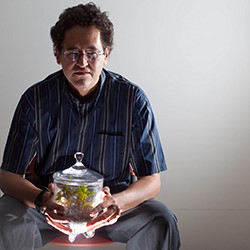 April 2, 2019
April 2, 2019
Mathematical Mysteries of the Periodic Table
John Baez, University of California, Riverside
6:30 PM; Room 1128 (Suddath Room), Institute for Bioscience and Bioengineering (IBB) Building, 315 Ferst Dr NW, Atlanta, GA 30332
Closest public parking is Visitors Area 4, Ferst Street and Atlantic Drive, https://pts.gatech.edu/visitors#l3
Abstract
Why do atoms behave the way they do? Why do electrons form “shells,” as seen in the periodic table?
Why does the first shell hold 2 electrons, the second 8, and the third 18: twice the square numbers 1, 4, and 9?
It took many years to solve these mysteries, and a lot of detective work in chemistry, physics, and ultimately – once the relevant laws of physics were known – mathematics.
Other mysteries remain unsolved, like the mass of the heaviest possible element. This talk will give a quick tour of these puzzles and some of the answers.
About the Speaker
John Baez is a professor of mathematics at the University of California, Riverside, who also works at the Centre for Quantum Technologies, in Singapore. His Internet column “This Week’s Finds” dates back to 1993 and is sometimes called the world’s first blog.
Baez used to work on quantum gravity and pure mathematics.
In 2010, concerned about climate change and the future of the planet, he switched to working on a general theory of networks that appear in human-engineered and biological systems.
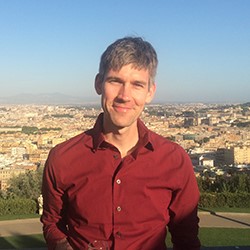 April 18, 2019
April 18, 2019
The Periodic Table: A Treasure Trove of Passion, Adventure, Betrayal, and Obsession
Sam Kean, Author of “The Disappearing Spoon”
7:30 PM
VENUE CHANGE: Salon 4, Georgia Tech Hotel & Conference Center, 800 Spring St. NW, Atlanta, GA 30308
Closest visitor parking is Area 6 (Fifth Street and Spring) or Area 8 (Tech Square) on the parking map, https://pts.gatech.edu/visitors#l3.
Abstract
Why did Gandhi hate iodine? Why did the Japanese kill Godzilla with missiles made of cadmium? How did radium nearly ruin Marie Curie’s reputation? And why did tellurium lead to the most bizarre gold rush in history? The periodic table is one of humanity’s crowning scientific achievements, but it’s also a treasure trove of passion, adventure, betrayal, and obsession.
About the Speaker
Bestselling author Sam Kean’s book “The Disappearing Spoon” delves into every element in the periodic table and explains each one’s role in science, money, mythology, war, the arts, medicine, alchemy, and other areas of human history, from the Big Bang through the end of time.
In addition to “The Disappearing Spoon,” Sam Kean has several other titles on the New York Times bestselling list: “Caesar’s Last Breath,” “The Dueling Neurosurgeons,” and “The Violinist’s Thumb.” All of his books were named Amazon top science books of the year. His work has been featured on NPR’s “Radiolab,” “All Things Considered,” and “Fresh Air.”
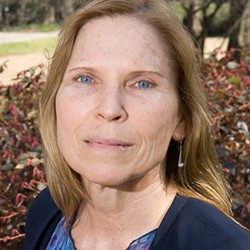 Sept. 12, 2019
Sept. 12, 2019
The Elusive End of the Periodic Table: Why Chase It?
Monica Halka, Georgia Tech Honors Program
6:30 PM; Room 1128 (Suddath Room), Institute for Bioscience and Bioengineering (IBB) Building, 315 Ferst Dr NW, Atlanta, GA 30332
Closest public parking is Visitors Area 4, Ferst Street and Atlantic Drive, https://pts.gatech.edu/visitors#l3
Abstract
For more than half a century, dedicated and eager groups of scientists have contrived ways to introduce heavier and heavier elements into the universe. Their efforts finally completed the seventh row of the famous—if poorly understood—periodic table of the chemical elements.
Now all 118 elements have names, even though most spontaneously decay more quickly than you can say “Oganesson” or “Livermorium.”
What now? Continue? Try to start another row? Why? To what end, and at what cost?
This talk will explore the economic, societal, and scientific benefits and drawbacks inherent in this pursuit.
About the Speaker
Monica Halka is an experimental physicist whose research focused on the interaction of light with atoms.
She has coauthored a set of six volumes on the periodic table, which examines historical, astrophysical, and practical observations about each of the chemical elements.
She serves as associate director of the Honors Program at Georgia Tech, where she teaches courses in optics, energy science, and the nuclear age, among others.
 Oct 15, 2019
Oct 15, 2019
Plutonium Chemistry and the Battlefields of the Cold War
David L. Clark, PhD, National Security Education Center Los Alamos National Laboratory
6:30 PM; Room 1128 (Suddath Room), Institute for Bioengineering and Bioscience (IBB) Building, 315 Ferst Dr NW, Atlanta, GA 30332
Closest public parking is Visitors Area 4, Ferst Street and Atlantic Drive, https://pts.gatech.edu/visitors#l3
Abstract
Cold War rivalry between the United States and the Soviet Union lasted for much of the second half of the 20th century. While the superpowers never engaged directly in full-scale armed combat, a nuclear arms race became the centerpiece of a doctrine of mutually assured destruction, and prompted a mass production of plutonium, and the designing, building, and testing of large numbers of nuclear weapons.
David L. Clark will summarize our current understanding of actinide chemistry in the environment, and how that understanding was used in the decontamination and decommissioning of the Rocky Flats Site, where plutonium triggers for U.S. nuclear weapons were manufactured. At Rocky Flats, synchrotron radiation measurements made at the Stanford Synchrotron Radiation Laboratory were developed into a science-based decision-making tool that saved billions of dollars by focusing site-directed efforts in the correct areas, and aided the most extensive cleanup in the history of Superfund legislation to finish one year ahead of schedule, ultimately resulting in billions of dollars in taxpayer savings.
About the Speaker
David L. Clark is a Los Alamos National Laboratory (LANL) Fellow and Director of the Laboratory’s National Security Education Center. He received a B.S. in chemistry in 1982 from the University of Washington, and a Ph.D. in 1986 from Indiana University.
He is an international authority on the chemistry and physics of the actinides, and has published over 175 peer-reviewed publications, encyclopedia and book chapters.
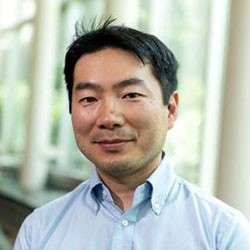 Oct. 31, 2019
Oct. 31, 2019
Turning Sour, Bloated, and Out of Breath: Ocean Chemistry under Global Warming
Takamitsu Ito, School of Earth and Atmospheric Sciences
7:30 PM; Salon 4, Georgia Tech Hotel & Conference Center, 800 Spring St. NW, Atlanta, GA 30308
Closest visitor parking is Area 6 (Fifth Street and Spring) or Area 8 (Tech Square) on the parking map, https://pts.gatech.edu/visitors#l3.
Abstract
In 1997, the Japanese oceanographer Yoshiyuki Nozaki compiled a periodic table of ocean chemistry, encapsulating the distribution of elements as a function of depth. In this periodic table, many elements share similar patterns, classified into just a few categories. The similarities indicate a common set of mechanisms behind the ocean cycling of elements.
The interaction of ocean circulation, chemistry, and biology sets the distribution of elements in the ocean. For example, nonreactive elements are nearly uniformly distributed in the water column, homogenized by ocean circulation and mixing.
Nutrient elements are depleted near the surface because of biological consumption and enriched in mid-depth due to decomposition of organic matter. Some trace metals – such as Fe, Zn, Ni, and Cd – follow this pattern. In contrast, some heavy metals – like Al, Mn, Co, and Pb – are subsumed into particles and removed from seawater.
Building on the insights from Nozaki’s periodic table, this talk will interpret recent measurements of changing seawater chemistry, highlighting the importance of rising carbon dioxide concentration in the air, climate change, and pollution of rivers and atmosphere.
About the Speaker
Takamitsu “Taka” Ito is an associate professor in the School of Earth and Atmospheric Sciences, where he teaches physical and chemical oceanography. He received a Ph.D. in Earth, Atmospheric, and Planetary Sciences in 2005 from Massachusetts Institute of Technology. His research has focused on the cycling of carbon, oxygen, and iron in the global oceans, using observations, theory, and computational modeling.
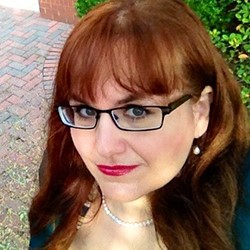 Nov. 12, 2019
Nov. 12, 2019
The Geopolitics of the Rare and Not-So-Rare Elements
Margaret E. Kosal, Sam Nunn School of International Affairs
6:30 PM; Venue TBD
Abstract
Chemical elements have played important roles in the geopolitics of modern times and will continue to do so.
From Einstein’s 1939 letter to President Franklin D. Roosevelt highlighting the need to secure uranium ores, to an insurgency fought over phosphorus, to a Chinese embargo of rare-earth elements in retaliation for a maritime incident in the East China Sea, to “blood batteries” for electric vehicles dependent on cobalt mined by child laborers in the Democratic Republic of Congo, to calls for new international agreements on asteroid mining, the role of elements in geopolitics is vast and significant.
What does this mean for the U.S., for the rest of the world, and for the future of technology?
About the Speaker
Margaret E. Kosal is an associate professor in Georgia Tech’s Sam Nunn School of International Affairs. She directs the Sam Nunn Security Program and the Program on Emerging Technology and Security. She is also a member of the Parker H. Petit Institute for Bioengineering and Bioscience. Her research explores the relationships among technology, strategy, and governance.
She is the author of “Nanotechnology for Chemical and Biological Defense.” The book explores scenarios, benefits, and potential proliferation threats of nanotechnology and other emerging sciences. She is the editor of “Technology and the Intelligence Community: Challenges and Advances for the 21st Century.” The book examines the role of technology in gathering, assimilating and utilizing intelligence information through the ages. She is editor-in-chief of Politics and the Life Sciences. The journal publishes original scholarly research at the intersection of political science and the life sciences.
Kosal has served as a senior advisor to the Chief of Staff of the Army and as science and technology advisor in the Office of the Secretary of Defense.
Trained as an experimental scientist, Kosal earned a Ph.D. in Chemistry from the University of Illinois, Urbana-Champaign, working on biomimetic and nanostructured functional materials. She cofounded the company ChemSensing, where she led research and development of medical, biological, and chemical sensors.
